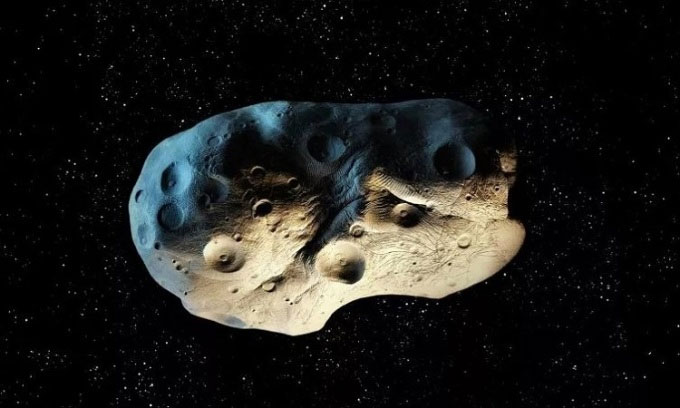A series of asteroids will pass by Earth at a safe distance from December 24 to 29, including a meteorite with a diameter of 260 meters.

Simulation of an asteroid flying through space. (Photo: iStock)
The first asteroid, named 2016 TR54, is expected to fly close to Earth on December 24, according to NASA’s Center for Near-Earth Object Studies (CNEOS). This meteorite will be closest to Earth at 1:30 PM on December 24, Hanoi time. The closest distance between 2016 TR54 and Earth will be 6.4 million kilometers, nearly 17 times the distance from Earth to the Moon.
CNEOS estimates that this asteroid has a diameter of 100 – 230 meters based on observations. During this approach, the object will move at a speed of 55,844 km/h.
The second asteroid passing by Earth at the end of December is called 2018 AH, which is slightly smaller than 2016 TR54. CNEOS estimates the object to be 84 – 190 meters wide. 2018 AH will be closest to Earth at 9:40 PM on December 27, at a distance of 1,002,299 kilometers, twice the average distance between Earth and the Moon.
However, the estimated trajectory of 2018 AH has a lower probability than that of 2016 TR54, and it is likely that it will not come closer than 4.5 million kilometers from Earth. CNEOS data shows that the object moves at a speed of 45,705 km/h.
The final asteroid among the three objects is 2017 AE3, which is likely the largest with a diameter of 120 – 260 meters. At the upper end of the estimate, 2017 AE3 would be slightly taller than the Golden Gate Bridge in San Francisco, USA, if the two objects were placed side by side.
2017 AE3 will be closest to Earth at 8:54 AM on December 29, at a distance of 3 million kilometers. The object moves at a speed of about 68,558 km/h, the fastest among the three asteroids.
CNEOS is currently tracking about 26,000 near-Earth asteroids (NEOs), with 1,000 of them having a diameter greater than 1 kilometer, but they are unlikely to collide with Earth. According to CNEOS, the threat from these space objects is actually much lower than the threat from car accidents or diseases. Although the likelihood of a collision is extremely low, NASA has actively monitored NEOs over the years to predict any potential impacts on Earth before they occur.


















































